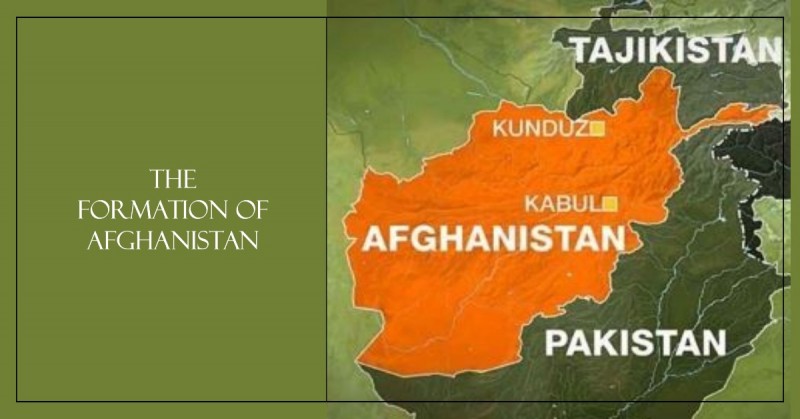
1. Introduction
Afghanistan, officially known as the Islamic Republic of Afghanistan, is a landlocked country located in Central and South Asia. It has a rich and complex history that stretches back thousands of years. In this article, we will delve into the full history of Afghanistan, exploring its ancient origins and the significant events that shaped its existence as a nation.
2. The Ancient History of Afghanistan
The region that is now Afghanistan has been inhabited since prehistoric times. Archaeological discoveries suggest that the area was inhabited by early farming communities as early as 5000 BCE. Over the centuries, various civilizations rose and fell in this region, including the Indus Valley Civilization, the Achaemenid Empire, and the Maurya Empire.
3. The Achaemenid Empire and Alexander the Great
In the 6th century BCE, the Achaemenid Empire, under the rule of Cyrus the Great, extended its influence over the region of present-day Afghanistan. However, the empire's control was challenged by Alexander the Great in the 4th century BCE. Alexander's conquest marked the beginning of Hellenistic influence in the area.
4. The Maurya Empire and the Buddhist Era
Following Alexander's retreat, the Maurya Empire, led by Emperor Ashoka, established control over Afghanistan. This period witnessed the spread of Buddhism throughout the region, with several prominent Buddhist sites and monuments being constructed.
5. The Islamic Conquest and the Rise of the Ghaznavids
In the 7th century CE, Islam reached Afghanistan with the Arab conquests. The region became a part of various Islamic empires, including the Ghaznavid Empire, which was known for its patronage of art and culture.
6. The Mongol Invasions and Timurid Dynasty
The 13th century witnessed the devastating Mongol invasions, led by Genghis Khan and his successors. The Mongols ravaged Afghanistan, causing widespread destruction. In the aftermath, the Timurid Dynasty emerged, bringing stability to the region and fostering a flourishing period of art, literature, and architecture.
7. The Mughal Empire and the Safavids
During the 16th century, Afghanistan came under the influence of the Mughal Empire, which ruled from the Indian subcontinent. However, the Mughals' control over Afghanistan remained tenuous, and the region often saw power struggles between different factions. At the same time, the Safavid Empire in Persia exerted its influence over parts of Afghanistan.
8. The Durrani Empire and Ahmad Shah Durrani
In the 18th century, Ahmad Shah Durrani, also known as Ahmad Shah Abdali, founded the Durrani Empire, which marked the beginning of modern Afghanistan. Ahmad Shah Durrani successfully united various Pashtun tribes and established a centralized government.
9. The British Influence and the Great Game
The 19th century brought significant changes to Afghanistan as the British Empire sought to expand its influence in the region. The British and Russian Empires engaged in a geopolitical struggle known as the Great Game, using Afghanistan as a buffer state. The British exerted control over Afghan foreign affairs, leading to tensions and conflicts.
10. The Durand Line and the Border Disputes
In 1893, the Durand Line was established as the border between British India and Afghanistan. This demarcation, however, caused controversy and ongoing border disputes between Afghanistan and Pakistan, which gained independence from British India in 1947.
11. The Soviet-Afghan War and Taliban Rule
The late 20th century witnessed significant turmoil in Afghanistan. In 1979, the Soviet Union invaded Afghanistan, sparking a decade-long conflict known as the Soviet-Afghan War. The war led to the rise of various mujahideen factions and eventually the emergence of the Taliban, who took control of Afghanistan in the 1990s.
12. The United States Intervention and Post-Taliban Era
In response to the 9/11 terrorist attacks, the United States launched an intervention in Afghanistan in 2001. The Taliban regime was overthrown, and a new government was established. However, Afghanistan faced numerous challenges, including insurgency, terrorism, and political instability.
13. Contemporary Afghanistan
Today, Afghanistan is a fragile nation striving for stability and development. It faces challenges such as ongoing conflict, economic hardships, and social issues. Efforts are being made by the Afghan government and international community to rebuild the country and establish lasting peace.
14. Conclusion
The history of Afghanistan is a tapestry woven with diverse civilizations, conquests, and struggles. From ancient empires to modern conflicts, Afghanistan has weathered countless storms. Its journey to stability and prosperity continues, with hopes for a peaceful and prosperous future.
What is the Mystery of Shushant Singh Rajput's Death?
Wrestlers' Protest: Khap Leaders Rally for 'Haryana Bandh' today
Kirron Kher Birthday: Celebrating a Versatile Bollywood Icon